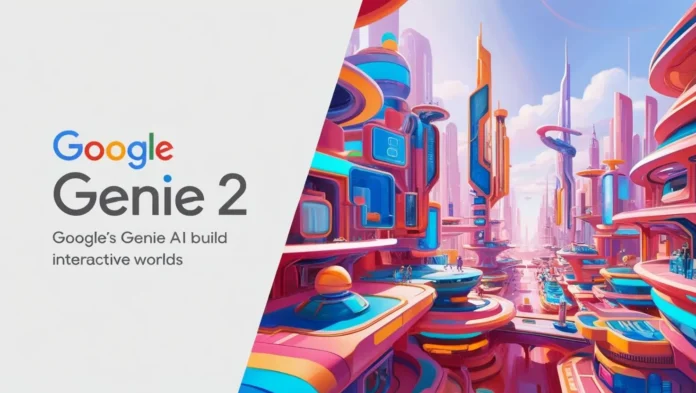Contents
🧠 Key Takeaways
- Google’s Genie 2 can generate playable 3D environments from a single image or command.
- This technology could revolutionize industries like gaming, robotics, and education.
- Introduced on 60 Minutes, Genie 2 showcases Google’s vision for the future of AI.
- Unlike static content generation, it supports real-time interaction and persistent world memory.
Introduction
The AI landscape is shifting faster than ever—and Google is pushing the limits again. In a recent episode of 60 Minutes, Google DeepMind CEO Demis Hassabis revealed Genie 2, an AI model with a jaw-dropping ability: it can create fully interactive, playable 3D worlds from a single prompt or image. It’s not just another chatbot or language model—Genie 2 is redefining how digital environments are conceived, interacted with, and brought to life.
What is Genie 2?
Genie 2 is an advanced AI foundation model that can generate entire interactive environments with minimal input. Unlike earlier models focused on language or image generation, this one synthesizes visuals, physics, and interaction mechanics to simulate explorable, responsive 3D spaces.
How it works:
- Input a drawing, photo, or text command.
- The AI instantly builds a 3D world that’s playable and reactive.
- Both humans and AI agents can explore and interact with the space.
Example: Upload a photo of a waterfall. Genie 2 will turn it into a fully navigable digital landscape, complete with sounds, physics, and elements you can interact with.
How Is It Different?
Here’s how Genie 2 stacks up against traditional AI content generators:
| Feature | Genie 2 | Traditional Generators |
|---|---|---|
| Input Types | Text, image | Mostly text or code |
| Output | Interactive 3D world | Static content or text |
| Real-time interaction | ✅ Yes | ❌ No |
| Memory of off-screen objects | ✅ Yes | ❌ No |
| Supports AI agent simulation | ✅ Yes | ✅ Limited |
Real-World Applications
The implications of Genie 2 are massive:
🎮 Game Development
- Rapid prototyping of levels and mechanics.
- Indie developers can generate environments without large teams.
🤖 Robotics & AI Training
- Realistic, safe environments for training robots.
- AI agents can be tested in custom-built, physics-based settings.
📚 Education & Simulation
- Interactive simulations for learning geography, physics, and history.
- Virtual field trips and hands-on experimentation—powered by AI.
Google’s Vision: Beyond Play
During the 60 Minutes segment, Hassabis emphasized that Genie 2 is part of a larger plan to simulate physical reality using AI. This opens doors to AI agents that understand, learn, and navigate real-world dynamics—not just process data.
Google is also building a new team focused on world modeling AI, aimed at blending simulation and reality. Think virtual robotics labs, urban planning simulations, or even AI-assisted filmmaking.
FAQs
❓ What makes Genie 2 different from other generative AIs?
It doesn’t just create content—it creates interactive environments that you can move through, explore, and manipulate.
❓ Is Genie 2 available to the public?
As of now, it’s still in research/demo phase. However, Google plans to open it up to developers and researchers in the future.
❓ Can Genie 2 generate realistic physics?
Yes. Genie 2’s environments are designed with realistic physical interactions, making it suitable for robotics and AI training.
Internal Links
External Sources
- CBS News – Google AI that builds interactive worlds
- The Verge – Google DeepMind launches world modeling team
Conclusion
Google’s Genie 2 is more than a new tech demo—it’s a signal that the line between physical and digital is blurring fast. With the ability to turn imagination into living, breathing environments, this AI model could reshape everything from game development to how we train autonomous systems.
👋 What are your thoughts on AI-generated interactive worlds? Let us know in the comments below!
